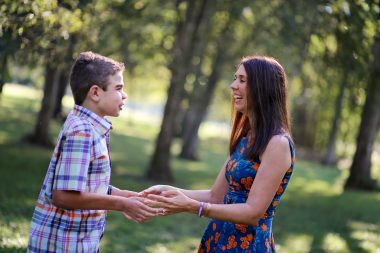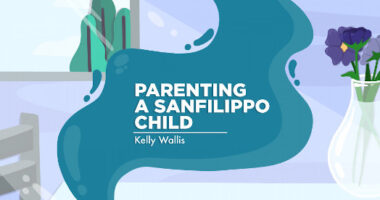I Mustache You, Do You See Me?

It happened.
It came on so gradually I didn’t even comprehend what was happening until it was there. But there is no denying it now: Will has a mustache.
I can’t ignore it any longer that my baby boy has a mustache. He has pimples. He has hair in new and surprising places, and his giggles and noises have definitely deepened in tone. He’s shooting up like a weed, and deodorant is becoming a necessity. I’m even positive I catch an intentional eye roll on occasion.
We are fully entrenched in puberty.
When you ask the parents of children with special needs, especially those with cognitive functioning issues like Will, who is 11, what they worry about, we normally reply with obvious answers. We worry about their health and happiness, and whether we can do all of the things we need to do to meet their needs.
For many of us, though, there is another consideration we often don’t voice: What happens as they grow up?
Being “different” in any sense of the word is difficult. Will was diagnosed with Sanfilippo syndrome at just 4 years old. You couldn’t tell by looking at him that anything was “different.”
The good news about that was that people weren’t initially quick to judge him or avoid eye contact with us. The bad news was that they expected age-appropriate behavior from a child who would never be able to reach certain developmental expectations.
But now Will’s differences are more apparent. His noises, gait, the manner in which we never let him go so that he won’t run off or grab something that isn’t his (a common occurrence, as he’s quite the pickpocket) — they all tip people off that there’s something more going on with him.
You’d think that would be a good thing, right? That more people understanding would mean fewer people judging? Instead, what happens isn’t people accepting him, but rather ignoring and avoiding him.
As Will continues to grow and becomes less “cute” and more obvious in his disability, I worry about how others will treat him. And I’m not alone, as many parents worry about what will happen when their special needs child is no longer considered “cute,” as evidenced here, here, and here.
I see it already. Instead of smiling at his adorable giggles, people avert their eyes from his manly grunts. Instead of laughing at his funny dance moves, they turn away from his jerky movements. Ignoring him is almost worse than judging him, because by avoiding him, people aren’t welcoming him into the space. They pretend he isn’t there for their own comfort, and by avoiding him, they diminish their recognition of his personhood.
But Will isn’t only disappearing from people’s immediate line of sight, he’s also disappearing from society’s awareness of his needs. As he grows from a special needs child to a special needs adult, fewer resources, activities, support services, and even clothing options are offered to him. Bigger often means harder, especially for caretakers, who often put strain on their own mental and physical health.
Even something as simple as going to the bathroom becomes problematic. We want to give Will a full and active life but, as a diapered person, places where we can privately and safely change him are in short supply, which limits our outings and experiences as a family.
So, society, I need you to not look away when Will, in all his mustached, pimpled, preteen glory, walks past. I need you to look at him and see him — the real him, a beloved boy who belongs in the space just as much as anyone else and deserves to be recognized and supported. And when you look at him, I need you to say hello and smile.
Because what’s more smile worthy than an 11-year-old boy still willing to walk hand in hand with his momma?

Will, 11, and his mother, Valerie. (Courtesy of Valerie Tharp Byers)
***
Note: Sanfilippo News is strictly a news and information website about the syndrome. It does not provide medical advice, diagnosis, or treatment. This content is not intended to be a substitute for professional medical advice, diagnosis, or treatment. Always seek the advice of your physician or other qualified health provider with any questions you may have regarding a medical condition. Never disregard professional medical advice or delay in seeking it because of something you have read on this website. The opinions expressed in this column are not those of Sanfilippo News or its parent company, Bionews, and are intended to spark discussion about issues pertaining to Sanfilippo syndrome.








Leave a comment
Fill in the required fields to post. Your email address will not be published.